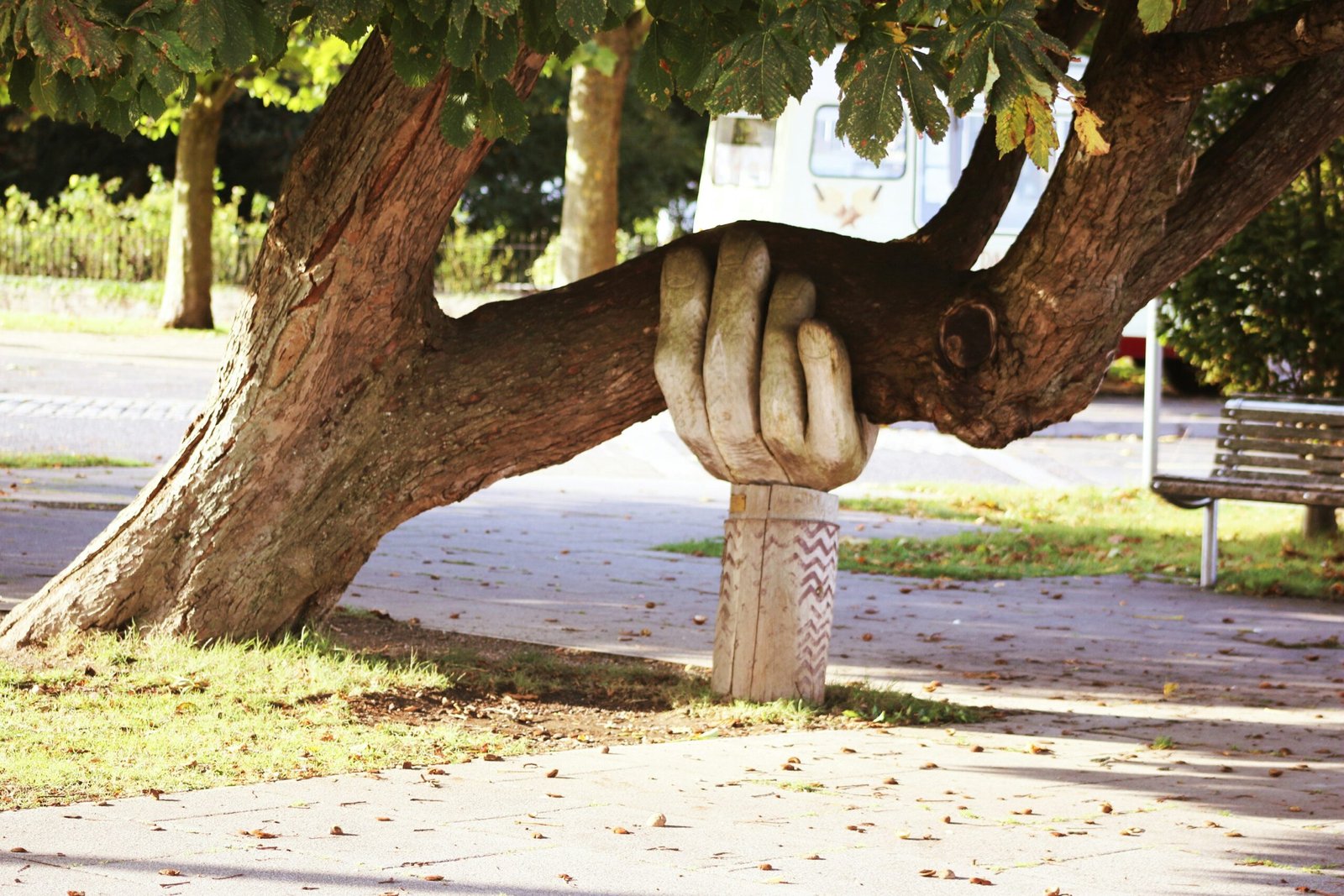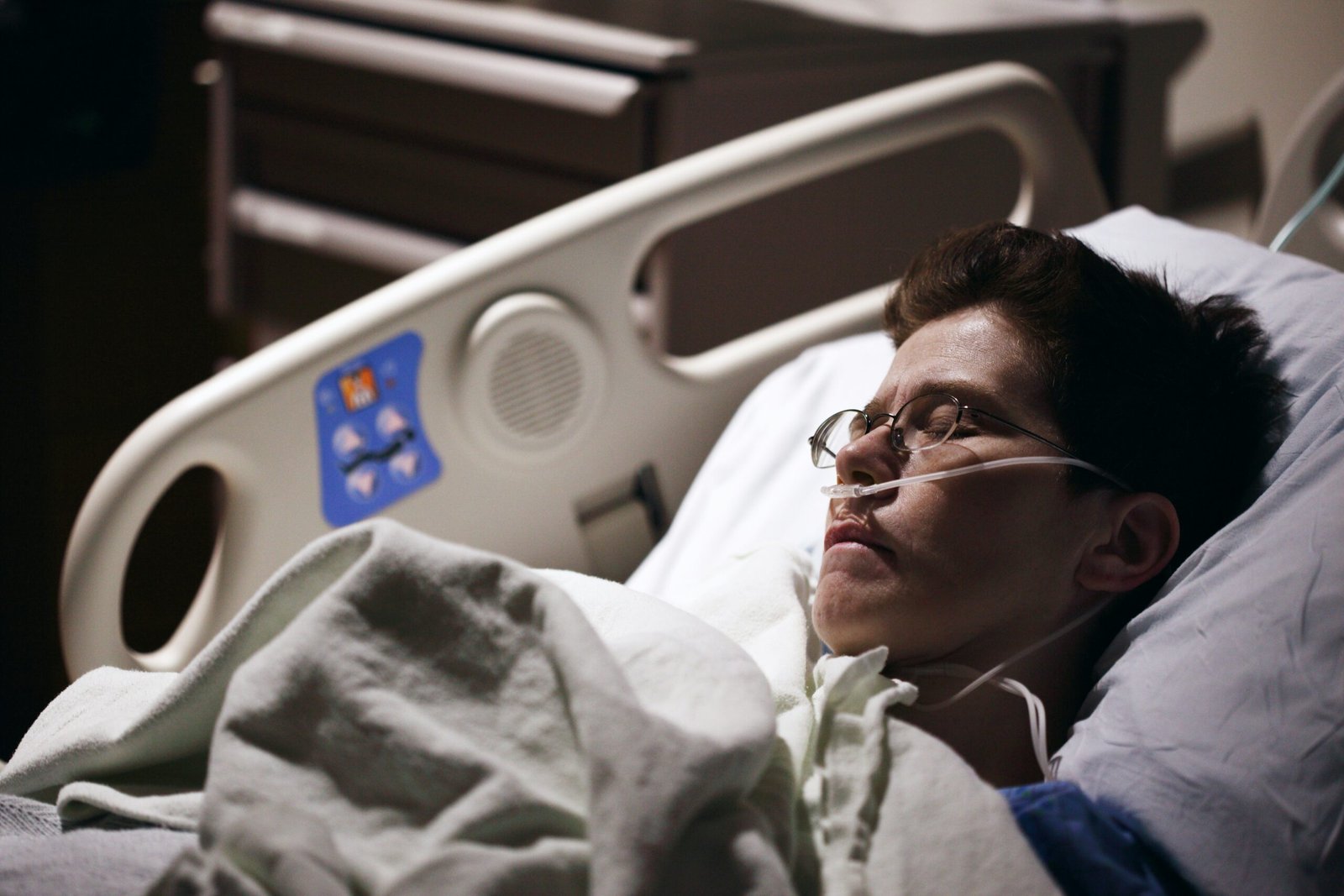Search opens in new window
Understanding the Impact of a Stroke
A stroke occurs when there is a disruption in the blood supply to the brain, which can result from a blocked artery (ischemic stroke) or bleeding within the brain (hemorrhagic stroke). This interruption prevents brain cells from receiving essential oxygen and nutrients, leading to cell death and subsequent loss of function in the areas of the body controlled by the affected parts of the brain. As a result, stroke can manifest in various ways, affecting not only physical capacities but also cognitive and emotional well-being.
Physically, stroke survivors may experience paralysis, weakness, or coordination difficulties, particularly on one side of the body. These disabilities can impede daily tasks like walking, eating, or personal care, leading to a significant loss of independence. In addition to mobility issues, many individuals face challenges with speech, language comprehension, and swallowing. These physical effects can vary greatly depending on the type and severity of the stroke, with some individuals recovering significant function while others may have ongoing difficulties.
From a cognitive standpoint, stroke can lead to problems with memory, attention, and problem-solving abilities. Emotional consequences are equally important; many stroke survivors experience feelings of isolation, anxiety, and depression. The trauma of the event, coupled with the adjustments required during recovery, can overwhelm individuals and strain relationships with family and friends. Understanding these multifaceted impacts is crucial in supporting oneself and seeking assistance where necessary. Recognizing the challenges of physical and emotional rehabilitation underscores the importance of self-support in navigating the post-stroke journey.
Effective self-support begins with awareness of these effects, enabling survivors to approach recovery with a clearer understanding of their needs and capabilities, paving the way for effective coping strategies and resources.
Setting Realistic Goals for Recovery
Following a stroke, establishing realistic and achievable goals is crucial for fostering an effective recovery process. Stroke recovery can be a long and complex journey, where each survivor may have a unique set of challenges and abilities. By setting personalized goals, individuals can create a structured approach, allowing them to focus on what they can accomplish, rather than becoming overwhelmed by setbacks.
It is essential to break down the rehabilitation process into smaller, manageable objectives. For instance, instead of aiming to fully recover mobility within a few weeks, a survivor could set a goal to practice walking with assistance for a certain duration each day. These incremental steps not only enhance the likelihood of success but also provide opportunities for celebrating small victories along the way. Recognizing and applauding these achievements can significantly boost a survivor’s motivation and foster a sense of accomplishment, which is vital for maintaining a positive mindset.
Furthermore, collaborating with healthcare professionals can facilitate the goal-setting process. Occupational therapists, physical therapists, and speech-language pathologists can help define realistic expectations based on the survivor’s current abilities and progress. These specialists can assist in developing a tailored recovery timeline that considers individual circumstances, ensuring that each goal is achievable yet challenging enough to promote growth.
Lastly, flexibility in goal-setting is essential. As recovery progresses, circumstances may change, and it may be necessary to adjust goals accordingly. This adaptability allows survivors to remain focused on their recovery journey without feeling disheartened by any challenges they encounter. By placing emphasis on setting realistic, personalized goals, stroke survivors can enhance their recovery experience and cultivate resilience throughout their journey.
The Importance of a Support Network
The recovery journey post-stroke is often complex, necessitating a robust support network that includes family, friends, and support groups. These individuals and communities play an integral role in a survivor’s healing process, both emotionally and practically. The presence of a strong support network can help stroke survivors navigate the multitude of challenges they face, from physical rehabilitation to emotional recovery.
Emotional support is crucial for combating feelings of loneliness and isolation that frequently accompany a stroke. Family members and friends can provide a listening ear and understanding, helping survivors process their experiences and emotions. This emotional validation can significantly reduce anxiety, depression, and other mental health issues often experienced during recovery. Support groups also offer a unique platform where individuals can share their stories, challenges, and triumphs with those who have undergone similar experiences, fostering a sense of community and belonging.
Practically speaking, the support network is invaluable in facilitating access to necessary resources and services. Family and friends can assist in coordinating appointments, providing transportation, and helping with everyday tasks, which can become daunting after a stroke. Such assistance not only alleviates the burden on the survivor but also promotes independence as they gradually regain their skills. Support groups often share information about local services, rehabilitation facilities, and even financial resources, further enabling the recovery process.
In conclusion, cultivating a supportive network of family, friends, and peers is essential for stroke survivors. This network not only contributes to emotional well-being but also enhances practicality in daily activities and recovery efforts. Embracing available support can make a substantial difference in the rehabilitation journey, guiding individuals toward a more fulfilling and connected life post-stroke.
Adapting Your Living Environment
Creating a living environment that fosters independence and safety is crucial for individuals recovering from a stroke. Modifying one’s home is an essential step in enhancing accessibility, thereby significantly improving the quality of life. The changes made can facilitate daily tasks and reduce the risk of accidents that may hinder progress in rehabilitation.
One of the primary considerations when adapting your living space is the installation of adaptive equipment. This includes items such as grab bars in the bathroom, shower chairs, and elevated toilet seats, all of which provide necessary support and stability. Additionally, consider investing in mobility aids like walkers or canes to enable greater freedom of movement within the home. These enhancements not only create a safer environment but also encourage self-sufficiency.
Fall prevention strategies are also vital during this transition. To minimize the risk of falls, ensure that floors are clutter-free and well-lit. Remove loose rugs and wires from walkways, and consider using non-slip mats in areas prone to moisture, such as the kitchen and bathroom. Furthermore, installing brighter light bulbs or motion-activated lighting can significantly improve visibility, especially at night.
Effective organization strategies can also greatly enhance daily life. Arranging frequently used items within easy reach is essential, thus reducing unnecessary bending or stretching. Utilize storage solutions that accommodate various manipulation capabilities, such as pull-out shelves or lazy susans in cupboards. Use labels for drawers and storage containers to facilitate quick access to essentials.
By strategically modifying your living environment, you can create a space that not only promotes safety but also fosters confidence and independence post-stroke. Taking these measures will play a vital role in navigating the journey of recovery more effectively.
Finding Activities That Engage and Inspire You
Post-stroke recovery can be a challenging experience, but engaging in fulfilling activities can play a vital role in enhancing your quality of life. It is essential to find interests or hobbies that not only bring joy but also promote mental and physical well-being. This journey should prioritize discovering adaptive activities that suit your current capabilities and restrictions, ensuring that you are both entertained and motivated.
One effective way to stay engaged is by exploring creative outlets such as art, music, or crafting. These activities can often be adapted to suit various skill levels, providing both therapeutic benefits and a sense of accomplishment. For instance, painting or coloring may help improve fine motor skills while offering a relaxing and enjoyable experience. Similarly, music can serve as a powerful tool for expression, whether by playing an instrument or engaging in simple music therapy sessions.
Physical activities should also figure prominently in your daily routine. Gentle exercises, like chair yoga or water aerobics, can assist in improving strength and mobility while remaining accessible. Group classes or community-based programs can foster social interaction, creating a sense of belonging and support. Engaging in nature walks or gardening can provide not only physical exercise but also a connection to the outdoors, which can be uplifting for one’s mood.
Reading can be another excellent avenue for engagement, offering a mental escape and prompting cognitive stimulation. Audiobooks or e-readers can aid those with visual impairments or dexterity challenges. Additionally, participating in book clubs can enhance social connections, sparking conversations and shared interests.
Ultimately, the key to finding activities that inspire you lies in experimentation and openness to new experiences. By exploring different avenues, you can uncover interests that align with your capabilities, allowing for continued engagement in a fulfilling post-stroke journey.
Incorporating Self-Care into Your Routine
Self-care is a multifaceted approach to maintaining and enhancing one’s physical, emotional, and mental well-being, especially crucial during recovery from a stroke. The journey to recovery is not just about medical treatment; it also involves taking responsibility for one’s own health and wellness. Integrating self-care practices into your daily routine can significantly contribute to better recovery outcomes and an improved quality of life.
To effectively incorporate self-care, start by establishing a structured daily routine. This may include setting aside specific times for relaxation, physical activity, and social interaction. Relaxation techniques such as deep breathing, mindfulness meditation, or gentle yoga can alleviate stress and promote mental clarity. These practices assist in managing anxiety and enhancing emotional well-being, creating a balanced state of mind essential for recovery.
Physical exercise should also be a cornerstone of your self-care regimen. Consult with a healthcare provider to design an exercise program tailored to your abilities. Activities such as walking, swimming, or light stretching can enhance physical strength, coordination, and cardiovascular health. Importantly, engaging in regular physical activity not only aids physical recovery but also boosts mood and self-esteem.
Nutrition is another critical component of self-care. A balanced diet rich in fruits, vegetables, whole grains, and lean proteins can fuel your body and support healing. Monitoring and adapting your diet to ensure adequate hydration and nutrient intake will facilitate not only physical recovery but also cognitive functioning and overall health.
Additionally, mental health resources such as therapy or support groups can provide valuable assistance. Sharing your feelings and experiences with others who have faced similar challenges fosters a sense of community and understanding. By prioritizing self-care, individuals post-stroke can proactively embark on their recovery journey while enhancing their overall well-being.
Seeking Professional Help When Needed
Recovering from a stroke can be a daunting and multifaceted journey. It is crucial to understand that seeking professional help plays a vital role in facilitating a comprehensive recovery. Healthcare professionals can provide personalized assessments and tailored interventions designed to address the specific challenges that one may face after a stroke. Engaging with specialists is not just advisable; it is often essential for reclaiming independence and improving quality of life.
Among the various specialists available, physical therapists are pivotal in helping stroke survivors regain mobility and strengthen affected muscles. Through guided exercises and rehabilitation techniques, they create individualized therapy plans aimed at improving physical functionality. These professionals are equipped to assess one’s movement capabilities and impart strategies to overcome physical limitations that may arise during recovery.
Occupational therapy is another key component of post-stroke recovery. Occupational therapists focus on enabling individuals to perform daily activities that may have been compromised due to the effects of the stroke. These specialists teach patients techniques to adapt their routines and environments, thereby enhancing their ability to manage everyday tasks independently. They may also provide assistive devices and resources that can significantly ease the process of re-engagement in daily life.
Mental health is another crucial area that should not be overlooked. Stroke survivors often experience emotional challenges, including depression and anxiety. Consulting mental health professionals can provide essential support, offering therapeutic techniques and coping strategies to navigate these emotional hurdles. Psychologists and counselors can assist in addressing the psychological ramifications of a stroke, creating a safe space for individuals to process their experiences.
Ultimately, integrating various forms of professional help creates a supportive network that can lead to a more effective recovery. Proactively seeking assistance from healthcare professionals ensures that survivors are not navigating their journey alone but rather, have access to the resources and expertise necessary for enhanced recovery and overall well-being.
Utilizing Technology for Support
In the realm of stroke recovery, technology has emerged as a vital partner for many survivors. Various tools and applications have been developed to support stroke patients in their rehabilitation journey, offering innovative methods to track progress, enhance communication, and promote overall well-being. The integration of technology not only aids physical recovery but also addresses emotional and psychological needs during this critical phase.
One notable type of technology utilized by stroke survivors is mobile applications. These apps can assist in rehabilitation exercises, with features such as customizable routines and progress monitoring. For example, platforms dedicated to speech therapy offer exercises that help patients improve their communication skills, which are often affected post-stroke. Such applications can be particularly beneficial, allowing users to practice at their own pace and receive real-time feedback on their improvement.
Furthermore, wearable devices have gained popularity among stroke survivors. Gadgets like fitness trackers can monitor physical activity levels and important health metrics, such as heart rate. By keeping track of daily activities and providing reminders for medication, these devices help survivors maintain a healthy lifestyle while promoting accountability. This data can also be shared with medical professionals, ensuring a well-rounded approach to recovery.
In addition, online communities provide invaluable emotional support for stroke survivors and their families. Social media groups and forums create platforms where individuals can share experiences, challenges, and victories. Engaging with others who have faced similar struggles fosters a sense of belonging and encourages motivation. Many survivors find comfort in knowing they are not alone on their journey, which can significantly enhance their overall recovery experience.
Utilizing technology in various forms not only empowers stroke survivors to take charge of their recovery but also plays a crucial role in facilitating communication within their support networks. By embracing these tools, individuals can enhance their rehabilitation process and foster a sense of community. As advancements in technology continue to evolve, the potential for improving quality of life for stroke survivors only grows stronger.
Embracing Resilience and Positivity
Recovering from a stroke is undeniably a challenging journey, but cultivating a resilient mindset can have a profound impact on the healing process. Mindset plays a crucial role in recovery; it affects not only mental well-being but also physical health. By embracing resilience, stroke survivors can navigate the complexities of their new reality with a sense of empowerment and determination.
Fostering positivity begins with the recognition that every small advancement in recovery is a step worth celebrating. Acknowledging progress, no matter how minor it may seem, can nurture a sense of achievement and motivate individuals to continue striving towards their goals. Whether it’s enhancing mobility, improving speech, or regaining independence in daily activities, celebrating these milestones reinforces a survivor’s ability to acknowledge their capabilities and potential.
Finding strength in adversity is another vital component of the recovery journey. Adversity is often a catalyst for growth, pushing individuals to develop new coping strategies and seek support systems. This resilience can be cultivated through various practices, such as journaling, mindfulness, and engaging in restorative activities that promote well-being. By focusing on what can be controlled and setting realistic, achievable goals, survivors can shift their perspective to one of possibility rather than limitation.
Moreover, surrounding oneself with positive influences can enhance the healing experience. Engaging with supportive friends, family members, or fellow survivors fosters a collective sense of encouragement, reminding individuals that they are not alone in this journey. A supportive network can provide motivation, accountability, and inspiration, making the road to recovery less daunting.
In conclusion, embracing a resilient and positive mindset is essential for stroke survivors. By celebrating progress, finding strength in challenges, and surrounding themselves with supportive individuals, they can enhance their recovery experience and pave the way for a fulfilling life beyond stroke.



